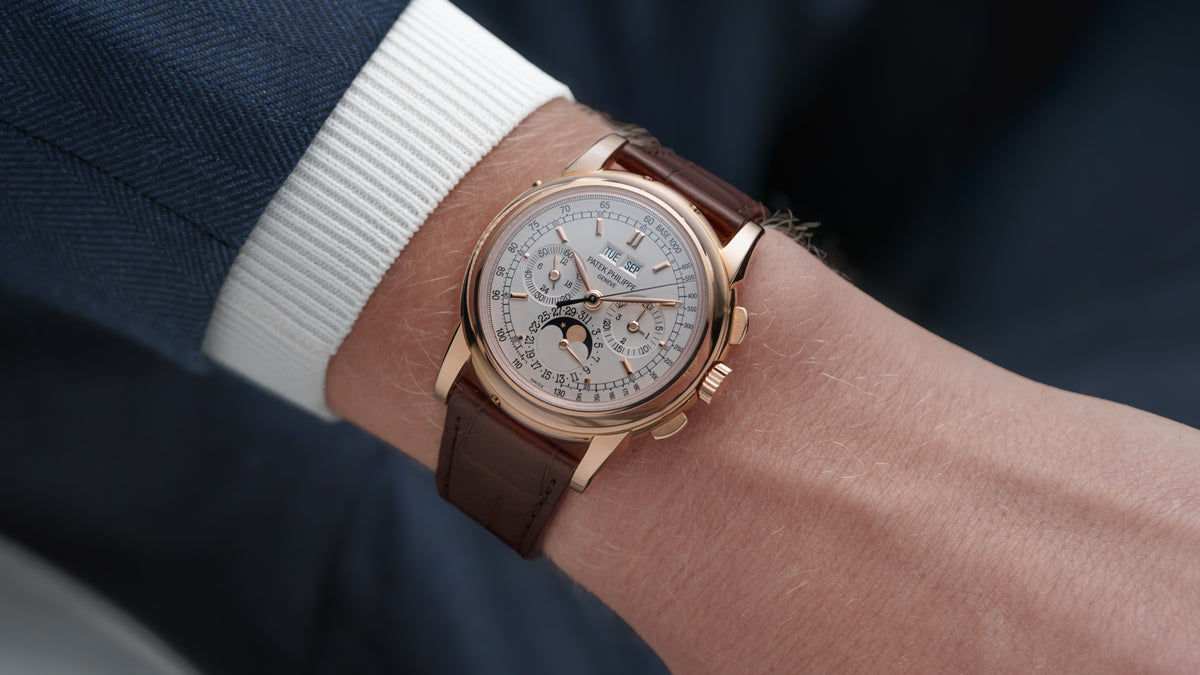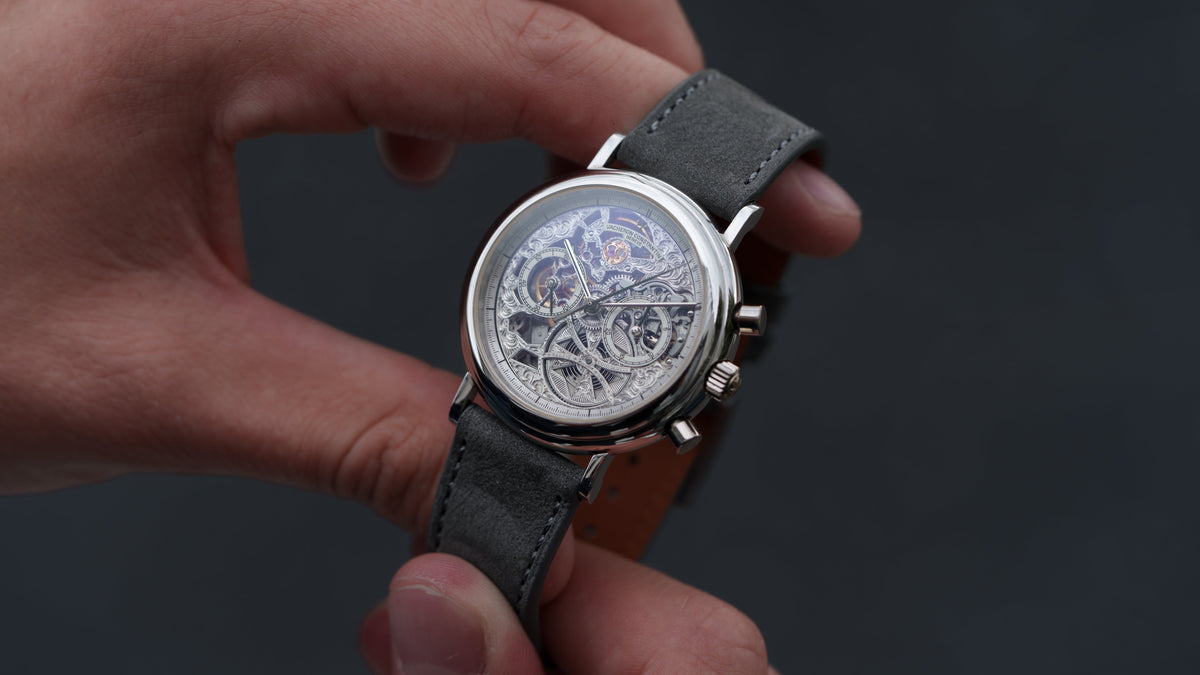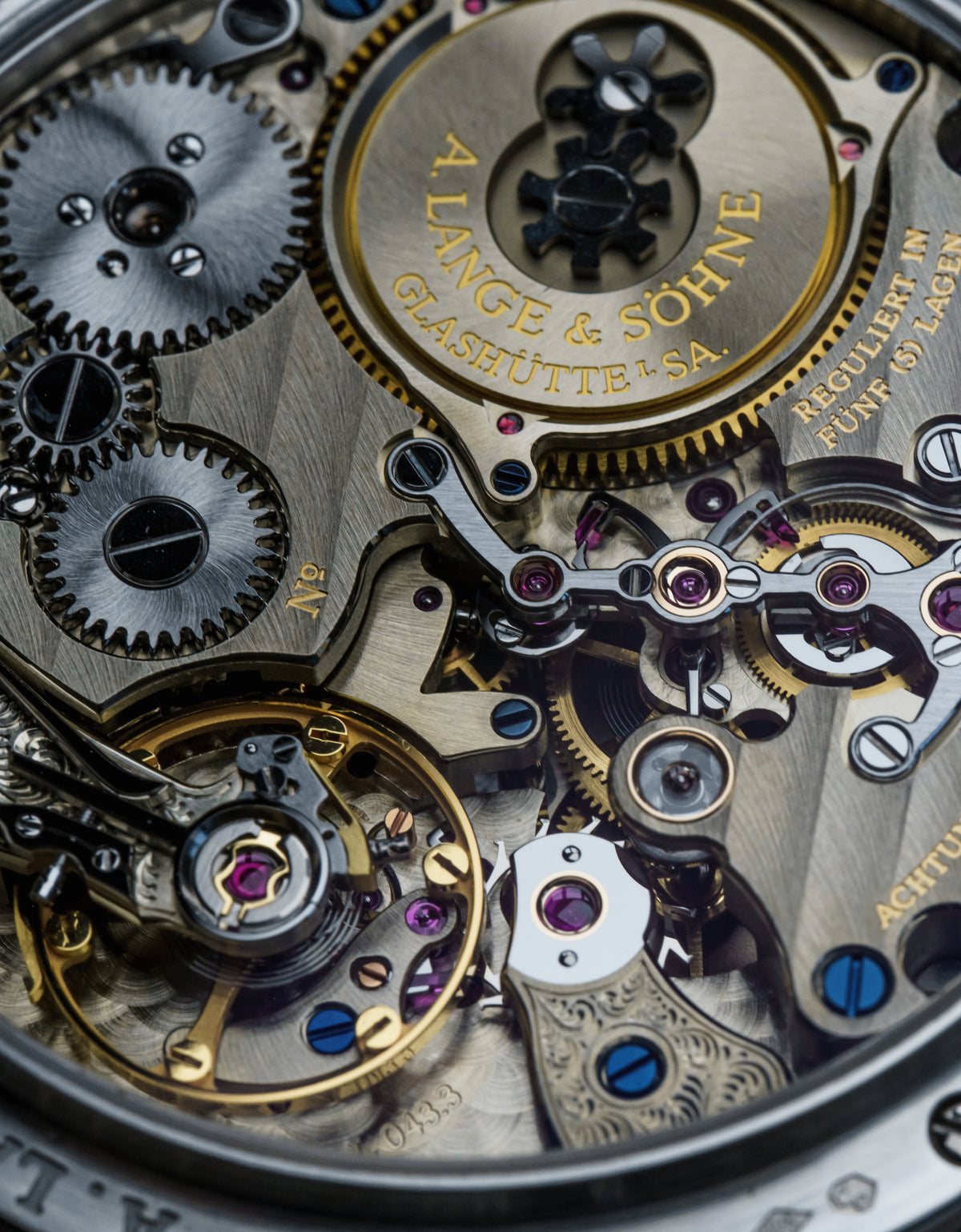Lapis Dial 18038 Rolex Day-Date
This is a 18038, but unlike most 18038 it’s a lapis dial. Absent any indices, with apertures framed in yellow gold, this is one of the ultimate yellow gold Day-Date specs. Lapis was and remains one of the most notoriously difficult materials to machine. There is a widely stated figure that stone Day-Date dials had an 80% failure rate, or 2 of 10 successfully completed. Drilling apertures, achieving appropriate thinness, natural material flaws, and casing could all pose challenges. Those that survive today are to cherished. Based on market composition over the last decade, it’s likely that only 2-3% of 18308 production was stone dial. Or many didn’t survive.

The five-digit series of Day-Dates showed up 1977 and paired the functionality of a new higher-beat movement (for accuracy) with single quick-set date. Visually, the recipe altered in equal measure. This was where sapphire first appeared in the Day-Date. This was also where the dial first became flat from the 1803’s ‘pie-pan’ shape. Rolex became wildly experimental with their stone dials in this generation. The lapis we see here has a deep royal blue shimmer, but also sports flecks of gold. Those gold sparkles come from pyrite that develops naturally in the stone. The fact that it happens to perfectly match this 18k gold case is a coincidence, but one Rolex likely anticipated. The harmony is so in tune that the stone looks like it was born to reside here. It’s worth noting that Swiss alone and T Swiss T can be right here, regardless of hands.

Is there a Day-Date that can rival this for warmth and natural beauty? Probably only another stone dial. And while white gold or platinum stone dial without diamonds has rocketed into the stratosphere value-wise, yellow gold remains somewhat more accessible. Few look this good, however, so expect a fair premium for this is: brilliant.

This example is in excellent overall condition. Lapis stone is extremely fragile. It is not uncommon to see significant cracks or threads running through dials. This one, though, shows nothing of the sort. The lugs are sharp, its bracelet tight. I’d wager this one spent more time in a safe than on wrist, but perhaps its next owner can remedy that. It comes as watch only from a well-regarded Dubai retailer.









































0 comments
Write a Comment